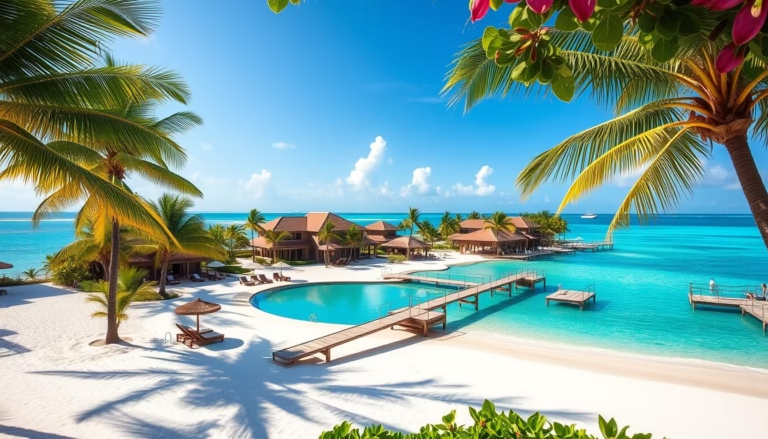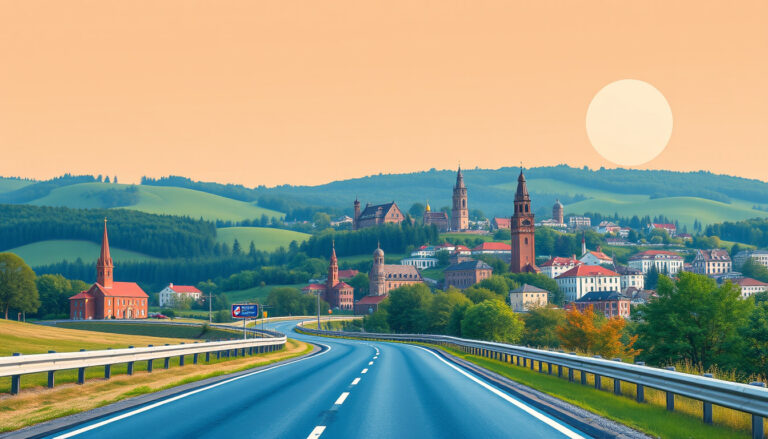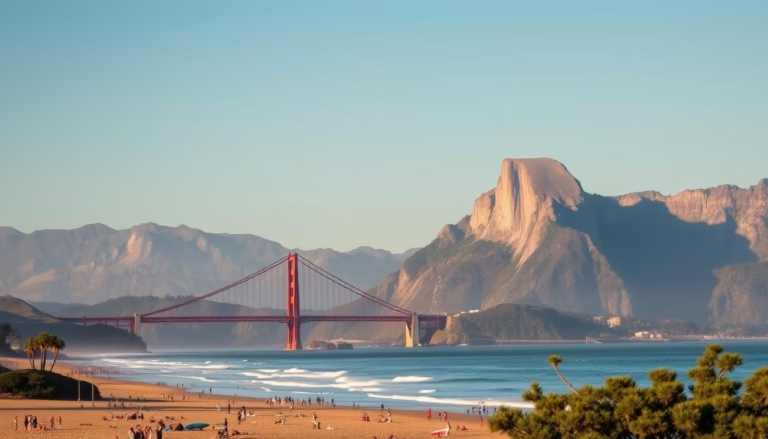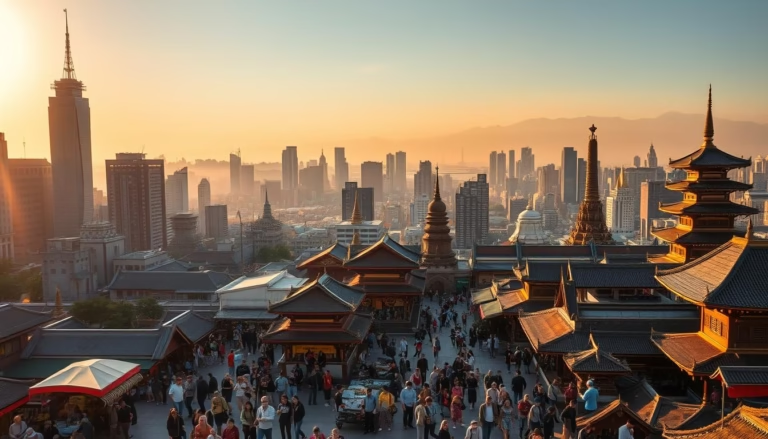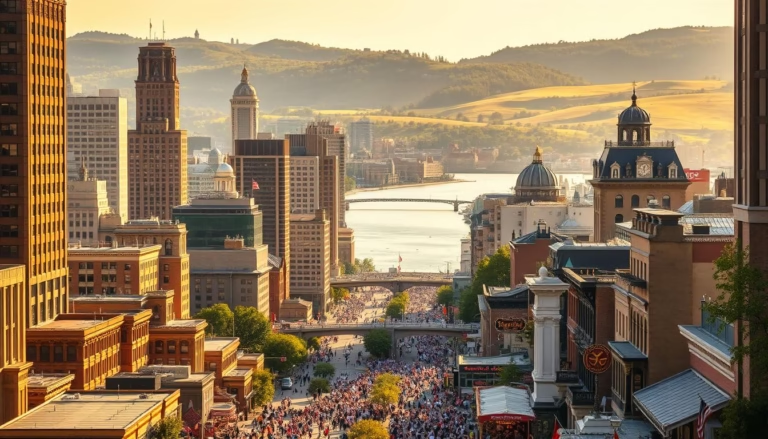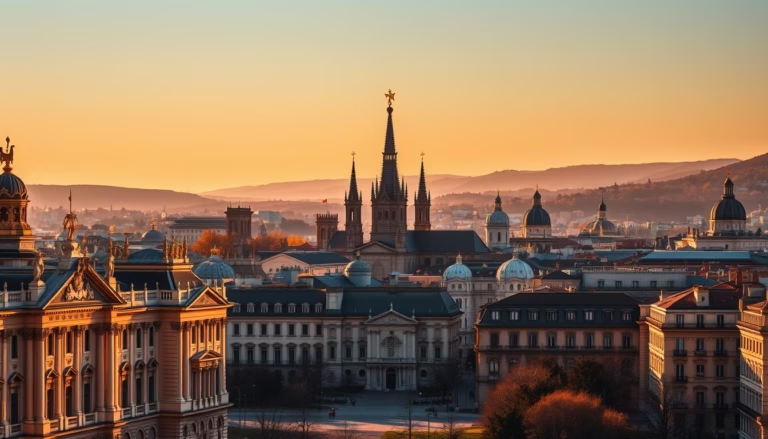Discover the Best Cities in Virginia to Live and Visit
Did you know Virginia attracts over 45 million visitors annually while maintaining a population growth rate 30% higher than the national average? This unique blend of tourism appeal and residential demand highlights why the state stands out as a multifaceted destination for both short-term adventures and long-term roots.
Known as the “Mother of Presidents,” this historic region offers more than colonial landmarks. Its diverse geography stretches from mountain trails to coastal shores, creating endless opportunities for outdoor enthusiasts. Urban hubs thrive with tech innovation and cultural events, while smaller towns preserve centuries-old charm.
Families benefit from top-ranked schools and safe neighborhoods, supported by a stable economy fueled by government, defense, and tourism sectors. Whether seeking a peaceful place to call home or planning an unforgettable trip, Virginia’s quality of life shines through its balance of tradition and progress.
Key Takeaways
- Diverse living options from urban centers to coastal communities
- Blend of historical significance and modern innovation
- Access to mountains, beaches, and year-round outdoor activities
- Strong job market across multiple industries
- Highly rated education system with renowned universities
- Four-season climate ideal for varied recreational interests
- Rich cultural experiences through arts, food, and festivals
Introduction: Explore Virginia’s Unique Blend of History and Modernity
Walk down cobblestone streets shaded by skyscrapers, and you’ll see why this region captures America’s story. Eight U.S. presidents were born here, and landmarks like Jamestown whisper tales from the nation’s founding days. Yet historic brick buildings now house craft breweries and tech startups, showing how the past fuels tomorrow’s ideas.
The state’s geography shapes its character as much as its rich history. From the misty Blue Ridge peaks to Chesapeake Bay’s tidewaters, nature’s playground sits minutes from urban centers. Well-maintained highways and rail lines connect rural towns to economic hubs, letting small communities thrive without losing their charm.
What makes Virginia stand out? It’s the balance between honoring heritage and chasing innovation. Colonial-era taverns share blocks with AI research labs, while preserved battlefields neighbor solar farms. This fusion creates a dynamic quality of life – where weekend hikes through Civil War trails lead to weekday jobs in cutting-edge industries.
Families and professionals alike find opportunities here. Top-ranked schools sit near tech campuses, and commuter routes make DC jobs accessible. Whether you’re kayaking coastal marshes or networking in coworking spaces, the state offers spaces to grow roots while reaching new horizons.
Urban Vibes and Coastal Living in Norfolk and Virginia Beach
Where else can you watch warships glide past waterfront bistros or jog alongside dolphins at sunrise? Coastal Virginia blends urban energy with seaside charm, creating communities where naval history meets beach culture.
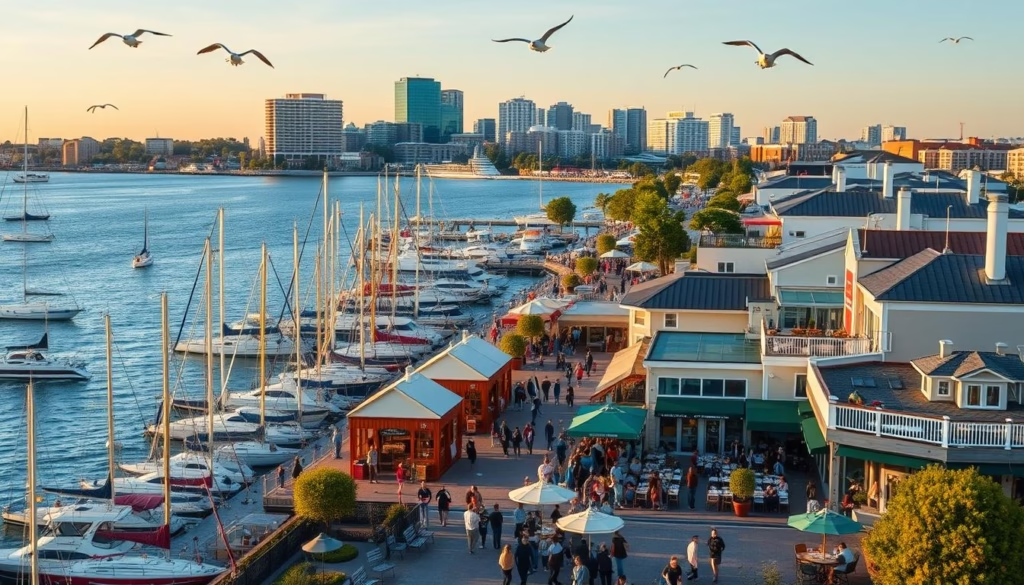
Norfolk’s Maritime Legacy Comes Alive
As home to the world’s largest naval base, this city breathes saltwater and innovation. The Chesapeake Bay shapes daily life here – 144 miles of shoreline host sailing regattas and seafood festivals. Don’t miss the NEON District’s kaleidoscopic murals or the Virginia Zoo’s endangered species exhibits.
Sun-Soaked Adventures by the Atlantic
Virginia Beach turns ocean dreams into reality with 35 miles of golden sand. The iconic boardwalk buzzes with live music and surf shops, while kayakers explore calm bay waters. Local restaurants serve crab cakes so fresh, you’ll taste the maritime heritage.
| Feature | Norfolk | Virginia Beach |
|---|---|---|
| Waterfront Miles | 144 (Bay) | 35 (Ocean) |
| Signature Attractions | Naval Station Norfolk | 3-Mile Boardwalk |
| Annual Visitors | 7.2 million | 19 million |
| Top Activities | Harbor tours | Surf lessons |
Both locations prove coastal living doesn’t mean sacrificing urban comforts. From Norfolk’s thriving arts scene to Virginia Beach’s eco-adventures, these communities make every day feel like a vacation.
Historic Downtowns and Cultural Richness in Virginia Cities
Step into living history where cobblestones meet contemporary culture. Virginia’s urban centers preserve their past while nurturing modern creativity, offering immersive journeys through time.
Colonial Architecture and Museums in Williamsburg and Alexandria
Alexandria’s Old Town feels like an open-air museum. Gas-lit lanterns glow above brick sidewalks lined with 18th-century townhomes, now housing indie bookstores and farm-to-table eateries. Just seven miles south, George Washington’s Mount Vernon estate overlooks the Potomac, its gardens blooming as they did in 1799.
Williamsburg takes preservation further as America’s premier living history museum. Costumed interpreters churn butter at working farms, while silversmiths demonstrate colonial techniques. The DeWitt Wallace Decorative Arts Museum displays early American craftsmanship, showcasing pieces from tea sets to intricate quilts.
| Feature | Alexandria | Williamsburg |
|---|---|---|
| Historic Sites | 50+ | 88 original buildings |
| Key Attraction | Torpedo Factory Art Center | Governor’s Palace |
| Annual Visitors | 4.3 million | 2.9 million |
| Unique Experience | Waterfront ghost tours | Revolutionary War reenactments |
These beautiful historic towns prove preservation fuels progress. Alexandria’s arts district thrives in repurposed warehouses, while Williamsburg’s research labs work alongside blacksmith forges. History here isn’t just remembered – it’s lived.
Featured: best cities in virginia to live and visit
Finding the perfect balance between opportunity and comfort defines life across the state. Northern areas shine with top-tier schools and efficient transit systems, while coastal and mountain regions offer slower-paced lifestyles. This variety lets residents choose environments matching their priorities.
Key Factors Defining Quality Life and Community Charm
Neighborhoods near Washington D.C. blend urban energy with suburban calm. Arlington’s walkable streets connect coffee shops to tech campuses, while Alexandria’s riverfront parks host weekend farmers markets. Commuters appreciate 30-minute Metro rides to federal jobs, making career growth accessible without sacrificing family time.
College towns like Charlottesville buzz with intellectual energy. The University of Virginia fuels innovation, while local bookstores and theaters create cultural hubs. Families enjoy year-round festivals and hiking trails winding through Blue Ridge foothills.
| Community Type | Key Advantages | Median Home Price |
|---|---|---|
| Northern Suburbs | Short DC commute | $625,000 |
| College Towns | Cultural events | $385,000 |
| Coastal Areas | Waterfront access | $295,000 |
Walkable downtowns strengthen neighborhood bonds. Williamsburg’s Duke of Gloucester Street features ice cream parlors beside historical sites. Weekly concerts in town squares turn strangers into friends, proving community spirit thrives here.
Compared to nearby metros, housing costs remain manageable. First-time buyers find options from condos to farmhouses. This balance lets families invest in homes while enjoying museums, parks, and other amenities typically found in larger cities.
Economic Opportunities and Job Markets in the Commonwealth
From tech hubs to coastal ports, Virginia’s job markets pulse with dynamic opportunities. The state’s strategic location near Washington D.C. fuels growth across government, defense, and emerging sectors. A 3.8% unemployment rate – below the national average – reflects steady economic health.
Growth in Tech, Defense, and Creative Industries
Northern Virginia’s tech corridor buzzes with innovation. Arlington’s cybersecurity firms protect global data, while Ashburn’s data centers form “Data Center Alley” – handling 70% of internet traffic daily. Government contractors thrive here, supported by the capital’s proximity.
Coastal regions blend tradition with progress. Virginia Beach combines naval operations at Norfolk Naval Station with growing software development roles. Tourism drives 19 million annual visitors, yet tech jobs increased 12% last year.
| Region | Key Industries | Employment Growth |
|---|---|---|
| Northern VA | Cybersecurity, Government | 5.1% (2023) |
| Hampton Roads | Defense, Logistics | 3.8% |
| Richmond | Finance, Healthcare | 4.3% |
Richmond’s economy thrives through Fortune 500 companies like CarMax. Universities like UVA and Virginia Tech spin off biotech startups, creating job opportunities in research cities. Solar energy projects now power 250,000 homes, showing renewable energy’s rising impact.
Ports in Norfolk handle $90 billion in annual trade, supporting shipping careers. This diversity means workers can shift between industries without leaving the state – a unique advantage shaping Virginia’s economic future.
Outdoor Adventure Hubs: Blue Ridge Mountains, State Parks, and Trails
Imagine waking up to misty peaks and trails leading to hidden waterfalls. Virginia’s wild spaces turn nature lovers into lifelong explorers. The Blue Ridge Parkway winds through this playground, offering overlooks where hawks soar above valleys painted with autumn hues.
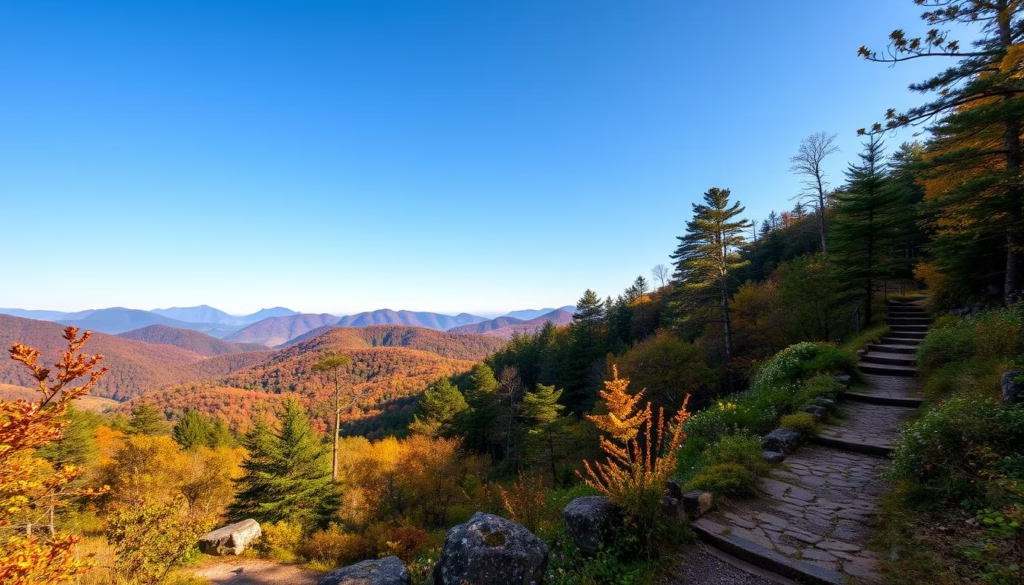
Shenandoah National Park serves as the crown jewel for hikers. Its 500+ miles of paths include the Appalachian Trail’s most photogenic stretches. Nearby, Luray acts as a gateway to underground wonders – marble caverns glow beneath the same mountains that challenge rock climbers.
Virginia’s 40+ state parks deliver adventures for every skill level. Families splash in Smith Mountain Lake’s coves, while anglers cast lines in Clinch River’s trout-rich waters. Park rangers lead stargazing tours where city lights fade into Milky Way vistas.
| Adventure Hub | Signature Experience | Annual Visitors |
|---|---|---|
| Blue Ridge Parkway | Scenic drives | 15 million |
| Shenandoah NP | Wildlife hikes | 1.4 million |
| State Parks | Family camping | 10 million+ |
Trail networks connect communities through landscapes that shift with the seasons. Cyclists pedal the 52-mile Virginia Capital Trail, passing historic plantations and riverside breweries. Winter transforms Massanutten’s slopes into tubing hills, proving the mountains offer year-round appeal.
What makes these regions special? You can summit a peak at dawn and kayak coastal marshes by sunset. From sandstone cliffs to quiet forest streams, Virginia’s geography serves up endless ways to play outside.
Arts, Culture, and Annual Festivals Celebrating Local Heritage
From mural-covered districts to music-filled mountains, Virginia’s cultural heartbeat pulses year-round. Communities transform into dynamic stages where heritage meets innovation, offering experiences that engage all senses.
Iconic Festivals and Cultural Events
Norfolk’s Virginia International Tattoo marches to the beat of military precision, featuring bagpipe corps and drill teams from global forces. Each July, Chincoteague Island hosts its legendary Pony Swim, a tradition dating to 1925 that draws 50,000 spectators. Lynchburg blends culinary arts with agriculture at the Virginia Wine & Garlic Festival, showcasing over 200 vendors.
| Event | Location | Highlight |
|---|---|---|
| FloydFest | Floyd | 7-day music celebration |
| Taste Leesburg | Leesburg | Local chef competitions |
| Blue Highway Fest | Big Stone Gap | Appalachian music heritage |
Creative Communities and Public Art
Norfolk’s NEON District bursts with color—warehouses turned into massive murals by international artists. Virginia Beach’s ViBe Creative District mixes studios with pop-up galleries, while Chrysler Hall hosts Broadway tours. These spaces prove culture isn’t just observed—it’s lived through interactive installations.
From coastal pony swims to mountain music jams, traditions fuel local pride and economic growth. Events generate over $300 million annually, supporting small businesses. Virginia’s artistic spirit thrives because communities continually reinvent their heritage.
Family-Friendly Communities and Top Educational Institutions
Virginia’s neighborhoods thrive as learning playgrounds where kids ride bikes to top-ranked schools and parents chat at weekend soccer games. Towns like Arlington and Ashburn set the standard with schools such as Yorktown High and Loudoun County’s academies, where STEM programs spark early curiosity. These family-friendly communities blend academic rigor with tree-lined streets perfect for trick-or-treating.
Northern Virginia shines with Fairfax County’s nationally recognized curriculum, while college towns like Charlottesville offer intergenerational learning. Universities host robotics camps and theater workshops, turning campuses into cultural hubs for all ages. Parents appreciate after-school coding clubs and library story hours that complement classroom lessons.
Planned neighborhoods prioritize connection through pool parties and community gardens. Newcomers quickly bond at summer concert series or youth sports leagues. With low crime rates and parks in every ZIP code, the state proves quality living means safe streets and shared laughter around playgrounds.
From preschools to PhD programs, educational options here support lifelong growth. Community colleges offer career training, while tech internships prepare teens for tomorrow’s jobs. In Virginia, raising a family means watching children flourish in spaces designed for discovery.

